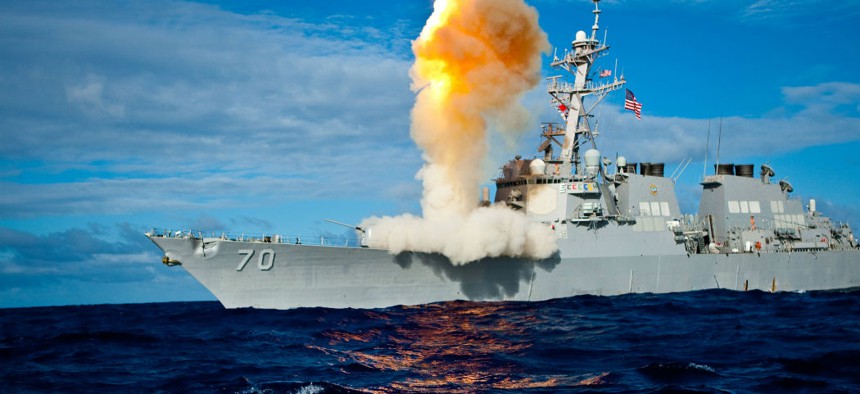After years of tights budgets that have constrained efforts to modernize Aegis-equipped destroyers and cruisers, Lockheed Martin is hoping the new administration’s comments about a larger fleet will translate into support for for the efforts to upgrade the radar, sensors and processors used for the combat systems on the ships.
“I’d like to see the pace of modernization pick up a bit,” says James Sheridan, Aegis program director for Lockheed.
It looks like that could happen, he said Jan 9 during a company briefing in advance of this year’s annual Surface Navy Association (SNA) conference.
While the Navy and the Obama Administration have supported Aegis combat system upgrades as part of the surface-warship modernization efforts, the money has not been made available for a fast fleet overhaul.
Sheridan now says Lockheed has a developed a way to backfit enhanced air dense and BMD capabilities on the combat systems of the older Aegis-equipped ships. Leveraging work the company has done on the U.S. Missile Defense Agency’s S-band Long Range Discrimination Radar (LRDR), the company has developed a solid-state antenna for the AN/SPY-1(V) radar that anchors the Aegis system.
During speeches Jan 10 at the SNA conference, Navy officials made it clear they needed to be able to squeeze more capability out of the fleet forces they have in hand, especially when it comes to integrated missile and surface ship operations.
Combined with the Multi-Mission Signal Processor (MMSP), the solid-state sensor systems would help provide the Navy with significantly enhanced integrated missile defense, Sheridan notes, while the service awaits the deployment of Raytheon’s Air and Missile Defense Radar (AMDR) on Flight III guided missile destroyers (DDG) 51 Arleigh Burke-class ships.
In putting together the losing bid for AMDR, Sheridan said, Lockheed had developed technology it could leverage to create the solid-state Aegis SPY radar upgrades.





